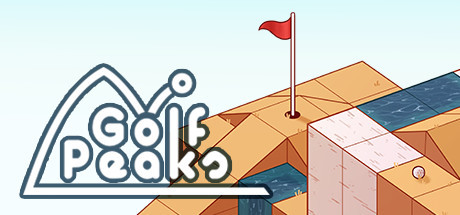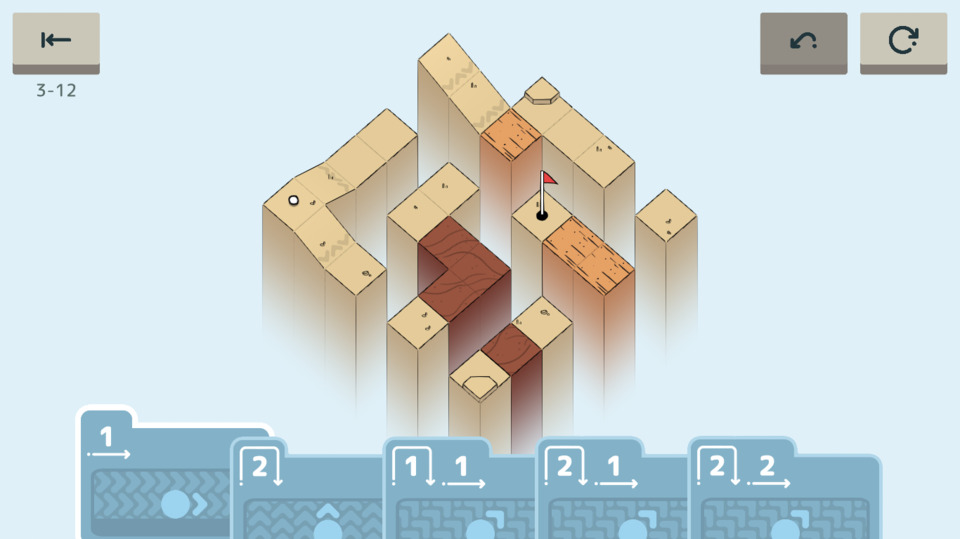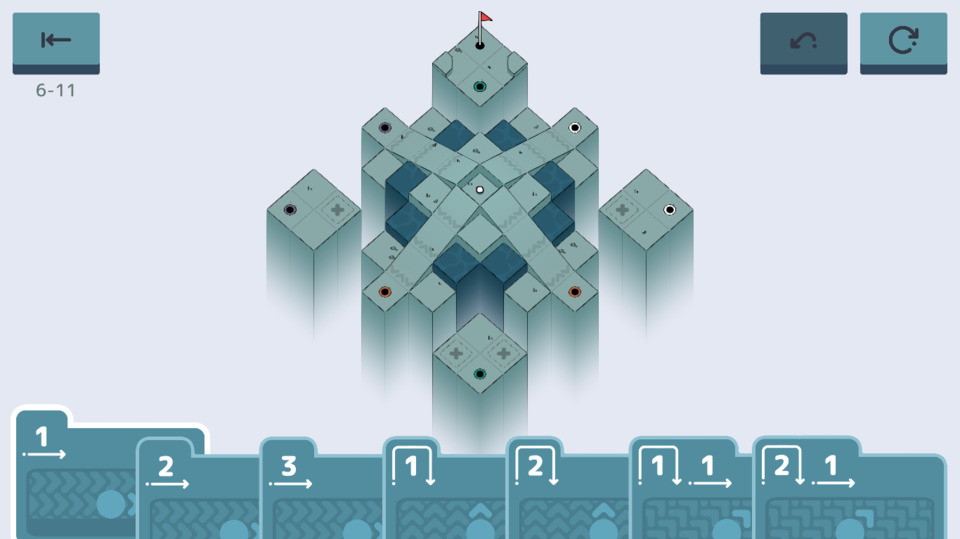Indie Game of the Week 213: Golf Peaks
By Mento 0 Comments

I'm not sure what this says about my psychology, but whenever I complete a gigantic game that's taken my focus for several weeks if not months I always come away from it feeling this acute sense of withdrawal that momentarily prevents me from starting something new. Like a certain inertia to embarking on a similarly long journey after a small period of enervation from concluding the previous. The Indie Game of the Week has served as an excellent palate-cleanser for these situations, and something like the chill contemplative movement puzzles of Golf Peaks doubly so. (The long game in this case would be Dragon Quest XI, which I think took over 150 hours to finally put to bed.)
Originally created for mobile devices with touchscreen control - most inputs require dragging motions - Golf Peaks is a game that deconstructs golf to an almost unrecognizable form: instead of adjusting the power and lob yourself, you are given cards that each represent a specific level of both based on discrete values that correspond to the game's gridlike level design. A card might have two icons indicating that the ball will fly through the air two spaces before moving across the ground another two; the player will continually expand their knowledge of how different types of terrain will react to air and ground shots and add those considerations to their planning. Each of the game's ten worlds appears (I've reached as far as World 7 so far) to introduce a new type of obstacle or function to the level, from bumpers that redirect ground shots to warp holes that take the ball to the hole with the corresponding color. The first few holes of any World - each has nine holes, plus three tougher bonus holes - will gently teach the player about these new inclusions before reverting back to wherever that world sits on the overall difficulty curve. World 6 was certainly harder than World 3, for instance, but those first few holes where it teaches the new gimmick were deliberate freebies.

Like most modern puzzle games, especially those built for smaller screens, there's a simplicity to both the game design and to the general calming aesthetic that belies the degree of brainteasing intensity of later instances. My per hole completion time currently ranges from a few seconds to around five minutes, though I'm sure that number will continue to balloon as the game adds more wrinkles and combines all the previously established obstacles in more insidious ways. At the same time, there's a meta that you eventually cotton onto that makes solving even the harder levels a little bit easier: you have so many cards to play (or moves to make) and there are usually certain bottlenecks where only specific cards in your hand will be applicable, usually around the start or end of the run. I've tried to highlight this thought process in the below screenshot, but it's sometimes easiest to work backwards from the hole if there's only so many ways to sink the ball. I've also noticed that you don't always need to use every single one of the cards; like golf, sometimes there are shortcuts you can take to drop below par that don't always have to rely on expert play. Since there's no skill component to Golf Peaks, it's all about determining if the most efficient route necessarily requires every move you have available. I want to believe that I'm finding (probably intentional) alternative routes to make these particular "birdies" and that there aren't just red herring cards thrown in occasionally, because the existence of the latter might really cause me some headaches later on.
Golf Peaks joins a small group of puzzle games I've covered on Indie Game of the Week like Divide by Sheep (IGotW #119) and Puzzle Puppers (IGotW #81) with isometric, graphically minimalist perspectives and a certain unhurried ambient vibe to their soundtracks and presentations that operate best as "decompressors." Games that knot out the stress, if that's even the right term, of longer and more involved playthroughs. Hours spent unwinding while knocking golf balls around after staring intently at its procession of slopes and sand hazards to intuit the correct order of steps will soon allow me to jump right back into another colossal RPG or open-world thing with a fully refreshed slate. Even if I didn't appreciate Golf Peaks for its clever mechanics and finely-tuned learning curve, I'd appreciate its "mental shiatsu" workout.

(Usual disclaimer: A DRM-free version of this game was included with 2020's Itch.io Bundle for Racial Justice and Equality. I include these disclaimers in case other owners of the bundle were unaware that these games were part of it.)
Rating: 4 out of 5. (So far.)
| < Back to 212: Jenny LeClue Detectivú | The First 100 | The Second 100 | > Forward to 214: Sydney Hunter and the Curse of the Mayan |
